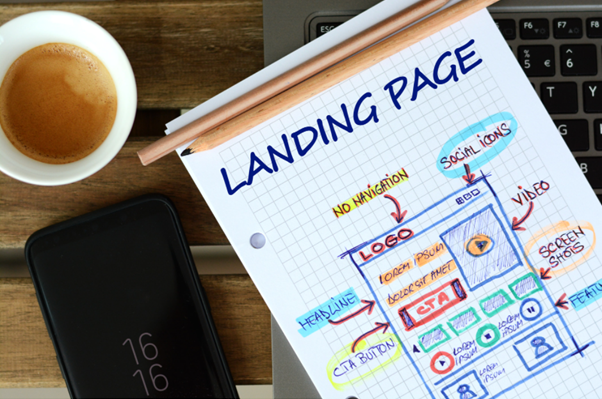The eCommerce Glossary

Our Easy-to-Understand eCommerce Glossary
It can be easy to get yourself lost in all of the lingo attached to eCommerce, and we’ve all been there! With the use of eCommerce continuously growing, it is important that we keep up with terminology and ensure we understand the terms and phrases we are communicating to clients or colleagues. A significant increase in online retail sales in 2020 caused an eCommerce growth rate of 26.4%, and the events of the coronavirus pandemic caused a lot of us to change the way we use the Internet. Whether you are new to the industry or simply want to refresh your mind and make sure you are up to speed, we have compiled a list of key terms that we use on daily basis discussing everything around eCommerce. So, dive into our easy A-Z and share your new-found knowledge!
Our A-Z eCommerce Glossary
A/B Testing – a randomised test used to assess two variants: A and B. This may be two ways of laying out a web page or page element for example. The two variants are then shown to different users at random and statistics on the engagement are provided to see which variant performed best.
Average Click-Through Rate (%) – the percentage of times your website has been clicked on when it appears in search results. This is calculated by dividing the amount of clicks by the amount of impressions and multiplying the answer by 100: (Clicks ÷ Impressions) x 100 = CTR %
Average Session Duration – average amount of time a user spends on your website in one session.
Bounce rate – a percentage that reflects the number of users who have exited your website after only seeing one page as opposed to other users who may click through to another page or make a purchase. The goal with bounce rate is for it to be as low as possible; a high bounce rate may mean your web pages need some looking at to encourage further engagement.
Buyer Persona – a fictional character that represents your average customer based off market research and data from your existing customers like demographics and background.
B2B – business-to-business commercial transactions. An example of this may be a business that manufactures parts for washing machines selling their goods to a business that manufactures the washing machines themselves.
B2C – business-to-consumer transactions. Examples of this are ordering a product from Etsy or Amazon.

Call to Action – content designed to prompt a web user to take some sort of immediate action. For example, “Buy Now” or “Sign Up to Our Newsletter”.
CLS – Cumulative Layout Shift. This measures the amount of unexpected layout shifts on a website page. For example, if a piece of text moves from the top of the page to mid-way through the page when loading. The lower the CLS score, the better and this is something that can be tracked in Google Analytics.
Conversion – when a customer completes a desired action, for example signing up for a newsletter or making a purchase.
Conversion Rate (%) – a calculation determined by how many customers complete a desired action. As an example, if you want 100 people to sign up to a newsletter and 70 of your customers do this, you have a 70% conversion rate.
Cost per conversion – a measure of how much money it costs to get a customer to make a conversion. For example, if you spend £500 to create/develop a campaign and 50 of your customers make the conversion, your cost per conversion is £10.
CPC – Cost-Per-Click. An average calculated by dividing the total amount you have been charged to display your ad by the number of users who have clicked onto your ad. The aim for average CPC is to be as low as possible and it is a good idea to monitor this over time in order to ensure you are making the best of your budget.
CSS – Cascading Style Sheets. A style sheet language that determines the appearance and design of a HTML page.
Customer Acquisition – put simply, this is the process of bringing in new potential customers or clients to your website.
Customer Lifetime Value – the total worth of a customer over their total time with a company; factors considered may be the number of purchases made, the average amount spend on a product/service and the length of the relationship with the company.
Demographics – measurements of data that help a company to discover and determine its target audience. Examples of this may be age, sex or gender.
Digital Marketing – the use of channels like social media, websites and search engines to market a product or service to consumers.
eCommerce – the action of buying or selling a product or service through online services or the Internet.
FTP – File Transfer Protocol. A form of communication to transfer files from one computer to another.
HTML – Hypertext Markup Language. The standard language used to create and organise documents on the World Wide Web.
Infographic – a combination of graphics and information presented in a quick and clear visual representation. This can be an effective way to promote your company on social media.

Key Performance Indicator (KPI) – a method of measuring the success of performance goals.
Landing Page – A landing page is often the page a potential customer will see after clicking an ad from an email campaign or social media promotion. This page is used to retain your audience and encourage them to take further action. Having a good landing page is crucial to increase conversions and generate higher revenue.
LCP – Largest Contentful Paint. A metric that measures how quickly the largest content on the screen takes to appear to the user complete and ready for any interaction.
Return on Ad Spend – a way of measuring how much profit you have made from an advertising campaign, allowing you to evaluate its effectiveness.
Impressions – the number of times that your ad has been displayed on a user’s device.
Search Visibility Position - The average position in which your website is displayed in search results for a particular query.
Organic Users – users who are visiting your website from organic search results.
New Users – users who are visiting your website for the first time.
Sessions – the number of times a user has visited your website.
Pages Per Session – the average amount of pages that are viewed on your website in one session.
Total Conversion Value – the total monetary value of your conversions.

Short on time to learn? Leave it to us!
We are an expert team of developers, designers, strategists and planners ready to guide your business to success and provide support in a wide range of areas. Our Cshop eCommerce hosting platform has been developed over the last decade to improve all elements of online retail. The Cshop platform has been delivering leading eCommerce solutions to small, medium and large businesses since June 2000. At iocea, our eCommerce specialists work closely with customers to deliver feature rich products that maximise multi-channel sales by implementing the best of breed technology along with our own in-house developments. With new technology being added to Cshop on a daily basis, you can benefit from all the latest ideas and knowledge we have within the industry.